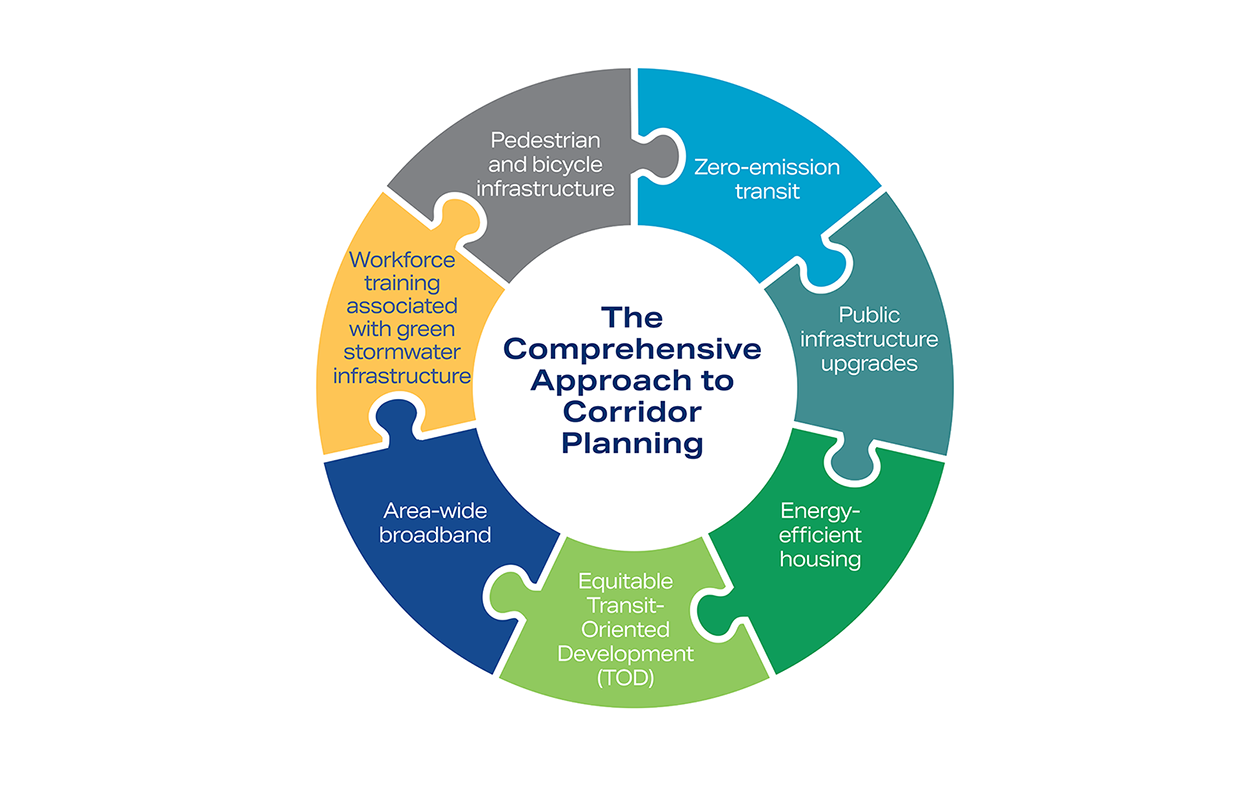
Benefits of the Plan for the Public

A strong transportation planning strategy is vital to connecting people with employment centers and housing options. People need a way to get to work.
A convenient public transportation system across the corridor could make it possible for people living in Independence to reliably commute to work in downtown Kansas City, MO, or make it easier for those living in downtown Kansas City, KS, to get to a job on the western end of the corridor, near Village West.
Ultimately, this plan will create both a framework and land use policies that allow municipalities to choose the right projects to support communities as they grow over the long term. This will help garner the support of public-private partnerships and government funding into the future.
What is a Mobility Hub?
Mobility hubs are locations where people can access multiple types of transportation in a central location, such as public transit, cycling, scooters, car share, and pedestrian walkways.
Much more than a bus stop, these spaces are critical to our transportation future. Mobility hubs offer choice, accessibility, and scale, making travel more convenient, reducing interruptions, and minimizing transition time while also reducing traffic and cutting emissions. Mobility hubs use existing infrastructure, are demand-responsive, and can be scaled up or down to fit market demand.
Environmental Sustainability/Economic Sustainability
Evaluating the corridor for bus rapid transit and other transportation modes will strengthen transportation options and establish a main artery along the corridor that meets zero-emission and Vision Zero goals.
Communities can be transformed when people are connected with opportunities through reliable transportation, including employment options, healthcare, education, and recreation. And, reducing transportation emissions leads to improving overall health in a community, in addition to other long-term environmental benefits.
There is tremendous economic potential along this corridor for both Kansas and Missouri, as well as across the wider Midwest.
Regenerative Planning
Regenerative Planning focuses on creating environmentally restorative and community-centric spaces. This approach enhances the connection to the natural environment while incorporating energy-efficient transit technologies that minimize the overall impact on the local environment.